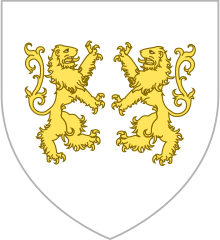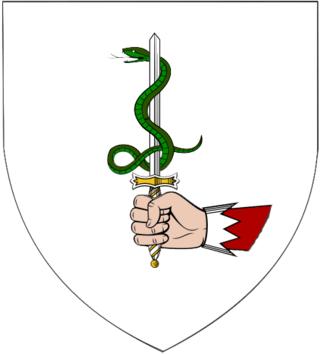O'Collins is a common anglicized surname of two ancient families of Irish origin: O'Cuilleain and O'Coilean.
Contents

O'Collins is a common anglicized surname of two ancient families of Irish origin: O'Cuilleain and O'Coilean.

O'Cuilleain or Cuilliaéan is an extremely ancient Irish name from Gaelic cuileann and primitive Gaelic cuilieann meaning Holly. In pre-Christian Celtic culture and history, the Holly Tree was regarded as sacred on account of its alleged mystic and herbal properties.
As testimony to the ancient age of this family, the origin of the word holly comes from the 11th Century Old High German hulis and Old English holegn both meaning Holly. The word hulis originates from an even older pre-Christian proto-Germanic word khuli a shortened derivation of the ancient Gaelic cuilieann both meaning holly.
The English word “holly” itself pre-dates the word holy which appeared around the 13th Century with the Old English word hālig derived from hāl meaning health, happiness and wholeness.
It is possible the word Celt is also derived from Holly as a description of these, the earliest leaders of Ireland. The first literary reference to the Celtic people, as keltoi is by the Greek historian Hecataeus in 517 BC. He locates the Keltoi tribe in Rhenania (West/Southwest Germany). The similar proto-Germanic word 'Khuli was in use at the time in the area through the proto-Germanic language, a shortened derivation of the ancient Gaelic cuilieann both meaning Holly.
Also sometimes written as Cualann, Cuilonn, Cullen, Culaan, Cuilinn and Cuillin, the O'Cuilleain originate from the Wicklow Hills (in Gaelic “Cill Mhantáin”) and were originally known as the Feara Cualann which probably more accurately translates as the Holly Men, than the Wicklow Men.
While the exact evidence of their migration south to West Cork is not clear, the event precedes the arrival of the O'Coilean (O'Collins) to the same area in the 12th Century by a significant period of centuries.
Ó Coileáin is an ancient Irish name from Gaelic coileain meaning "young warrior" or “hound”. In ancient Irish history, this family had a famous and fearless reputation for their skill at battle and are the original source of the name Collins, now so common throughout England and the world.
Due to pressures of defeat against the Anglo-Norman invaders, O'Coilean were gradually driven south from County Limerick to settle in the same approximate area as the O'Cuilleain in West Cork and Cork around the end of the 12th Century. As a result, the two families have been virtually impossible to geographically distinguish for the past eight hundred years.
The O'Donovans, also originally from Co. Limerick, and from the same ancient kingdom, known as Uí Fidgenti, made the journey to Co. Cork under similar circumstances, and so are closely related to these O'Collins.

The Brittoniclanguages form one of the two branches of the Insular Celtic language family; the other is Goidelic. It comprises the extant languages Breton, Cornish, and Welsh. The name Brythonic was derived by Welsh Celticist John Rhys from the Welsh word Brython, meaning Ancient Britons as opposed to an Anglo-Saxon or Gael.

The Celts or Celtic peoples were a collection of Indo-European peoples in Europe and Anatolia, identified by their use of Celtic languages and other cultural similarities. Major Celtic groups included the Gauls; the Celtiberians and Gallaeci of Iberia; the Britons and Gaels of Britain and Ireland; the Boii; and the Galatians. The relation between ethnicity, language and culture in the Celtic world is unclear and debated; for example over the ways in which the Iron Age people of Britain and Ireland should be called Celts. In current scholarship, 'Celt' primarily refers to 'speakers of Celtic languages' rather than to a single ethnic group.

Proto-Germanic is the reconstructed proto-language of the Germanic branch of the Indo-European languages.
The vast majority of placenamesin Ireland are anglicisations of Irish language names; that is, adaptations of the Irish names to English phonology and spelling. However, some names come directly from the English language, and a handful come from Old Norse and Scots. The study of placenames in Ireland unveils features of the country's history and geography and the development of the Irish language. The name of Ireland itself comes from the Irish name Éire, added to the Germanic word land. In mythology, Éire was an Irish goddess of the land and of sovereignty.
The filí were members of an elite class of poets in Ireland and Scotland, up until the Renaissance.
The Celtic calendar is a compilation of pre-Christian Celtic systems of timekeeping, including the Gaulish Coligny calendar, used by Celtic countries to define the beginning and length of the day, the week, the month, the seasons, quarter days, and festivals.

The Iverni were a people of early Ireland first mentioned in Ptolemy's 2nd century Geography as living in the extreme south-west of the island. He also locates a "city" called Ivernis in their territory, and observes that this settlement has the same name as the island as a whole, Ivernia. It was probably once the name given to all the peoples of Ireland, but by Ptolemy's time had a more restricted usage applicable to the inhabitants of the south-west. These Iverni can be identified linguistically with the Érainn, a people attested in Munster and elsewhere in the early Middle Ages.

Proto-Celtic, or Common Celtic, is the ancestral proto-language of all known Celtic languages, and a descendant of Proto-Indo-European. It is not attested in writing but has been partly reconstructed through the comparative method. Proto-Celtic is generally thought to have been spoken between 1300 and 800 BC, after which it began to split into different languages. Proto-Celtic is often associated with the Urnfield culture and particularly with the Hallstatt culture. Celtic languages share common features with Italic languages that are not found in other branches of Indo-European, suggesting the possibility of an earlier Italo-Celtic linguistic unity.

The Norse–Gaels were a people of mixed Gaelic and Norse ancestry and culture. They emerged in the Viking Age, when Vikings who settled in Ireland and in Scotland became Gaelicised and intermarried with Gaels. The Norse–Gaels dominated much of the Irish Sea and Scottish Sea regions from the 9th to 12th centuries. They founded the Kingdom of the Isles, the Kingdom of Dublin, the Lordship of Galloway, and briefly ruled the Kingdom of York. The most powerful Norse–Gaelic dynasty were the Uí Ímair or House of Ivar.
Túath is the Old Irish term for the basic political and jurisdictional unit of Gaelic Ireland. Túath can refer to both a geographical territory as well the people who lived in that territory.
The 1966 All-Ireland Senior Hurling Championship was the 80th staging of the All-Ireland Senior Hurling Championship, the Gaelic Athletic Association's premier inter-county hurling tournament. The championship began on 15 May 1966 and ended on 4 September 1966.
The 1943 All-Ireland Senior Hurling Championship was the 57th staging of the All-Ireland Senior Hurling Championship, the Gaelic Athletic Association's premier inter-county hurling tournament. The championship began non 2 May 1943 and ended on 5 September 1943.

The O'Donovans are an Irish family. Their patronymic surname derives from Irish Ó Donnabháin, meaning the grandsons or descendants of Donnubán, referring to the 10th century ruler of the Uí Fidgenti, Donnubán mac Cathail. During the 12th and 13th century, O'Donovan relations relocated from the Bruree/Croom area south to the Kingdom of Desmond and to Carbery, where they were a ruling family for centuries and played a role in the establishment of a feudal society under the MacCarthys. Other septs retreated into the southeast corner of the Ui Fidgheinte territory, reaching from Broadford/Feenagh to the Doneraile area. The northern septs of the O'Donovans did not use a White Rod as the family's position in their original territory was vastly eroded, while several septs of O'Donovans in the southwest territories were semi-autonomous flatha under the MacCarthy Reagh dynasty in Carbery, with the most notable being local petty kings. The family were counted among the leading Gaelic nobility of Ireland.
The various names used since classical times for the people known today as the Celts are of disparate origins.
Grian or Greaney is the name of a river, a lake, and region in the portion of the Sliabh Aughty mountains in County Clare. It formed part of the boundary of the kingdom of Síol Anmchadha.
The Uí Fidgenti, Fidgeinti, Fidgheinte, Fidugeinte, Fidgente, or Fidgeinte were an early kingdom of northern Munster in Ireland, situated mostly in modern County Limerick, but extending into County Clare and County Tipperary, and possibly even County Kerry and County Cork, at maximum extents, which varied over time. They flourished from about 377 AD to 977, although they continued to devolve for another three hundred years. They have been given various origins among both the early or proto-Eóganachta and among the Dáirine by different scholars working in a number of traditions, with no agreement ever reached or appearing reachable.
Onomastics is an important source of information on the early Celts, as Greco-Roman historiography recorded Celtic names before substantial written information becomes available in any Celtic language.

Ó Coileáin is a Modern Irish surname generally belonging to the descendants of the last leading family of the Uí Chonaill Gabra, a sept and small but notable overkingdom of medieval and ancient Ireland, based in western County Limerick. Throughout much of their history the Uí Chonaill Gabra were in turn the leading sept of the greater regional overkingdom of the Uí Fidgenti, considered among the highest ranked princes or flatha in all the Province of Munster. Ó Coileáin/Ua Cuiléin is most commonly anglicized O'Collins and O'Cullane. The surname has also long been found in County Cork, believed largely due to the migration there, probably in the late 12th or early 13th century, of a junior branch of the County Limerick dynasty.
Cualu or Cuala was a territory in Gaelic Ireland south of the River Liffey encompassing the Wicklow Mountains.